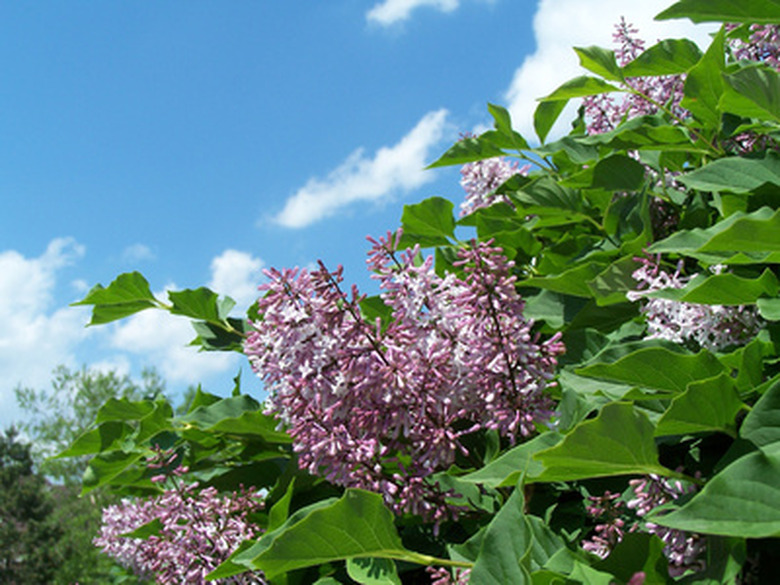How To Get Rid Of Mold On My Lilac Bush
Things Needed
- Fungicide concentrate
- Sprayer
- Pruning shears
Lilacs grow best when in full sun with plenty of ventilation to remove excess moisture. Powdery mildew and other molds can grow on lilacs if the bush is placed in areas without proper air circulation. Mold that occurs late in the season may not present a huge problem to next year's bloom growth, as the bush has stored enough energy throughout the year. You must address and deal with mold or mildew that occurs during the early spring or summer.
Step 1
Inspect the lilac every few days for signs of powdery mildew. Generally this type of mold will show itself as a white powder that begins on the small leaves. The mildew will quickly grow and cover the plant.
- Lilacs grow best when in full sun with plenty of ventilation to remove excess moisture.
- Powdery mildew and other molds can grow on lilacs if the bush is placed in areas without proper air circulation.
Step 2
Choose a specific fungicide for powdery mildew. Most fungicides are specific to the type of mold the concentrate controls. If you are unsure, contact your local agricultural extension service for recommendations. Special application needs or specific fungicides for your area may be available.
Step 3
Mix the fungicide according to label directions. Various types of fungicides have different application rates and solution mixes.
Step 4
Apply the spray to the entire lilac bush. If other lilacs are nearby, but do not exhibit the signs of mold, spray those plants as well. The fungus may be ready to appear on other lilacs.
- Choose a specific fungicide for powdery mildew.
- Most fungicides are specific to the type of mold the concentrate controls.
Step 5
Perform a followup spray application every 7 to 14 days during the early spring and summer season.
Step 6
Prune the lilac bush while it is dormant in the winter. Consult the extension service for a pruning schedule. Pruning will offer more air circulation to the bush. Different ages and sizes of lilacs require various types of pruning.
Tip
If the lilac has a persistent mold problem, transplant the bush to a better location. It's best to transplant the lilac bush in early spring prior to the leaves emerging from tight buds.
